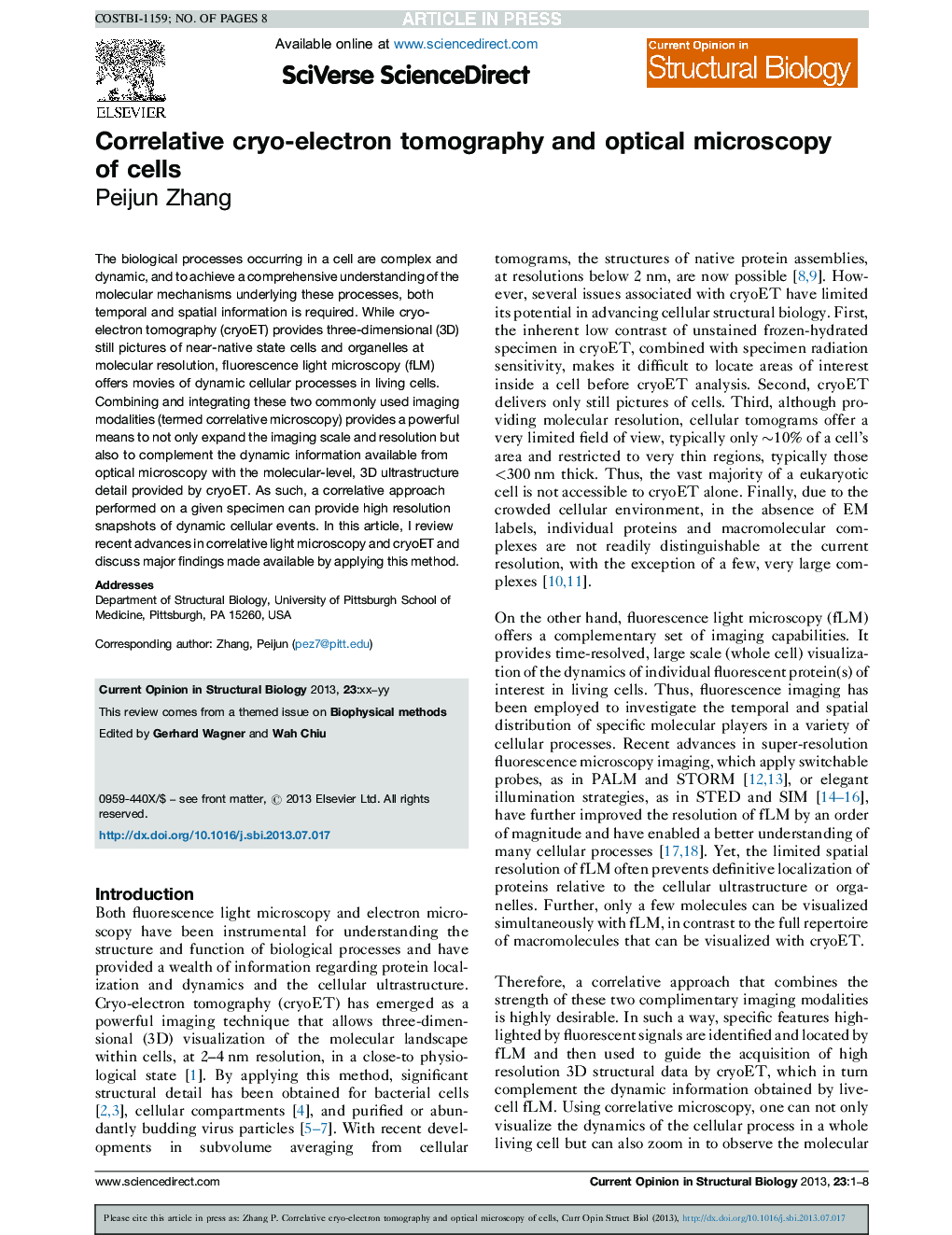| Article ID | Journal | Published Year | Pages | File Type |
|---|---|---|---|---|
| 10822605 | Current Opinion in Structural Biology | 2013 | 8 Pages |
Abstract
The biological processes occurring in a cell are complex and dynamic, and to achieve a comprehensive understanding of the molecular mechanisms underlying these processes, both temporal and spatial information is required. While cryo-electron tomography (cryoET) provides three-dimensional (3D) still pictures of near-native state cells and organelles at molecular resolution, fluorescence light microscopy (fLM) offers movies of dynamic cellular processes in living cells. Combining and integrating these two commonly used imaging modalities (termed correlative microscopy) provides a powerful means to not only expand the imaging scale and resolution but also to complement the dynamic information available from optical microscopy with the molecular-level, 3D ultrastructure detail provided by cryoET. As such, a correlative approach performed on a given specimen can provide high resolution snapshots of dynamic cellular events. In this article, I review recent advances in correlative light microscopy and cryoET and discuss major findings made available by applying this method.
Related Topics
Life Sciences
Biochemistry, Genetics and Molecular Biology
Biochemistry
Authors
Peijun Zhang,
